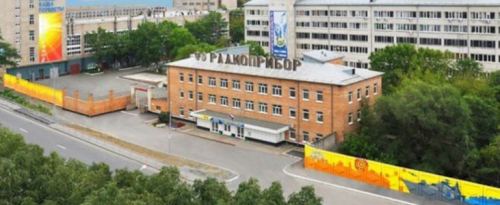Predictions of the imminent appearance of the new anti-air, anti-missile S-500 system come with regularity. Last week’s press reports aren’t novel in this respect.
Deputy Aerospace Forces (VKS) CINC and Chief of Air and Missile Defense General-Lieutenant Viktor Gumennyy [Goo-MYO-knee] says Almaz-Antey is completing development work on the S-500, and the VKS will receive it “soon.” Hard to argue. We know it’s in development, and he doesn’t say what “soon” means.
TASS and RIA Novosti covered Gumennyy’s comments on Rossiya 24 television.
The prevailing forecast is that the S-500 will complete development, and appear with operational units on an “experimental” basis in 2017.
As recently as early 2015, Deputy Defense Minister and procurement chief Yuriy Borisov predicted the S-500 wouldn’t complete development until 2017.
However, TASS reminds that VKS CINC General-Colonel Viktor Bondarev has said deliveries will start in 2016. He’s an inveterate optimist; in 2012, he said 2013.
In any event, it’s a chance to review what’s claimed to date about the S-500.
The typical advertisement for the S-500 calls it a new generation, long-range surface-to-air missile with increased capability for high altitude (200 km) intercepts against ballistic missiles and RVs. It can reportedly engage ten ballistic missiles simultaneously at a range of 600 km. The S-500 is supposed to be superior to both the S-400 Triumf and U.S. Patriot Advanced Capability-3 (PAC-3).
The system is supposed have 40N6M (possibly a longer-range mod of the S-400’s 400-km missile?) missiles as well as hypersonic 77N6-N and 77N6-N1 missile interceptors. TASS reported that these anti-missile missiles were successfully tested in mid-2014.
According to Interfaks, GPV 2011-2020 calls for procurement of ten battalions (or five “regimental sets”) of the S-500. Almaz-Antey’s original contract called for initial deliveries in 2015.
Noted by the regime or not, this is “GOZ breaking.” Some producers get in trouble for it; important ones sometimes don’t.
General-Lieutenant Gumennyy also reported that testing of the S-350 Vityaz SAM continues, and initial launches confirmed the system’s performance. The S-350 will replace older Russian S-300PS SAMs.
Gumennyy said the share of “modern” SAMs and radars in Russia’s inventory is 45 percent. Last December, the MOD indicated that 52 percent of all VKS weapons and equipment was “modern.”
P.S. President Vladimir Putin’s assistant for military-technical cooperation confirmed for Izvestiya today that Russia is negotiating sales of the S-400 system to China and India.



